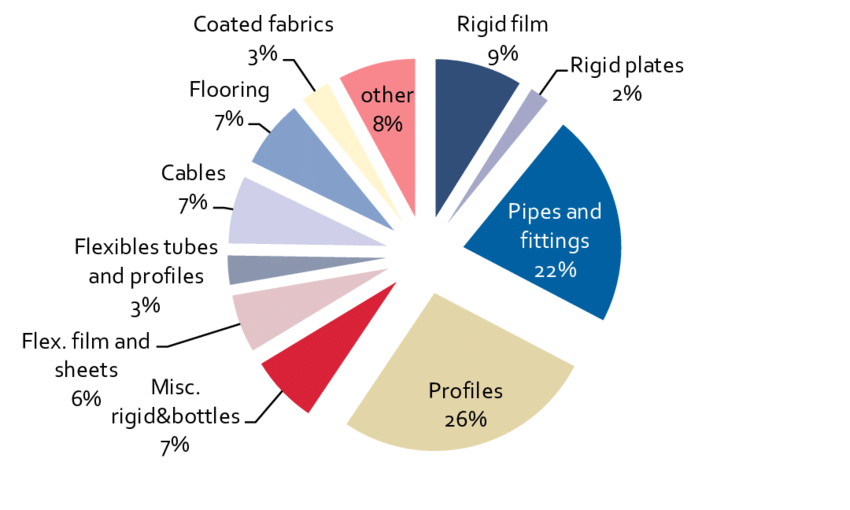Polyvinyl chloride (PVC) leather is a type of synthetic leather that is made from polyvinyl chloride, a polymer material that is commonly used in a variety of applications, such as pipes, cables, and flooring. PVC is a durable, flexible, and inexpensive material that is easy to shape and mold into a variety of forms, including sheets, tubes, or rods.

Production method
For the production methods, there are two common approaches used by most PVC factories worldwide, namely the casting method and the calendaring method.
With Casting method
- First, PVC powder is dissolved in a solvent along with plasticizers, colorants, fillers, and other ingredients to form a liquid.
- The liquid mixture of PVC is coated on release paper, which has texture.
- The coated release paper-PVC layers go through an oven, where the thickening agent in PVC layers is activated by heat, resulting in thicker PVC (depending on the desired thickness, the foaming step can be skipped).
- The next stage involves coating glue to adhere PVC layers to the backing fabric.
- The manufacturer removes the release paper to obtain the finished product with embossed patterns.
With Calendaring method
- The calendar PVC production process starts by mixing PVC powder, plasticizers, colorants, and other ingredients.
- PVC layers are then coated on a backing fabric to create the semi-finished (or base material).
- The semi-finished material goes through a foaming machine to increase the thickness of the PVC layers.
- Finally, the semi-finished product is embossed using a roller with texture, resulting in a different surface texture on the finished product.
For more details, check out our previous article comparing PVC Casting and PVC Calendaring.
PVC leather is applicable to many industries in daily life
PVC leather is a popular and versatile material that is used in a wide range of applications, including clothing, footwear, and accessories. It is also commonly used in the production of furniture, automotive parts, and medical equipment. Some of the advantages of PVC leather include its low cost, durability, and resistance to water and stains. However, it is not as breathable or environmentally friendly as natural leather, and does not have the same natural texture or appearance.





Advantages of PVC leather
- It is affordable and inexpensive. PVC leather is a cost-effective material that is generally less expensive than natural leather or other synthetic materials. This makes it a good choice for applications where cost is a major factor, such as in the production of mass-market goods or disposable items.
- It is durable and long-lasting. PVC leather is resistant to water, stains, and wear and tear, which makes it a good choice for applications that require a material that can withstand a lot of use or abuse. It is also easy to clean and maintain, which can extend its lifespan and reduce the need for replacements or repairs.
- It is versatile and easy to work with. PVC leather is a flexible and malleable material that can be easily cut, sewn, or molded into a variety of shapes and sizes. This makes it a good choice for applications that require a material that can be easily customized or adapted to different purposes, such as in the production of clothing or furniture.
Some considerations when using PVC leather
- It is not as breathable as natural leather. PVC leather does not allow air or moisture to pass through it, which can make it uncomfortable to wear or use in hot or humid conditions. This can be a problem in applications where the material needs to be worn or used for long periods of time, such as clothing or shoes.
- It is not entirely environmentally friendly. The production of PVC leather involves the use of chemicals and energy, which can result in waste and pollution.
- PVC leather typically has a lifespan of 2 to 3 years, but it can last up to 5 years depending on production requirements. On the other hand, high-end real leather products can last up to 15 years. In comparison, real leather has a much longer lifespan than PVC leather.
In summary, PVC leather is a practical and economical choice for a wide range of applications. Its affordability, durability, and resistance to water and stains make it a reliable option for industries such as fashion, furniture, and automotive. While it may not possess the same breathability and natural texture as genuine leather, PVC leather offers a cost-effective solution without compromising on quality. Whether you’re looking for versatility, longevity, or a budget-friendly alternative, PVC leather proves to be a compelling choice.
Leave a Reply